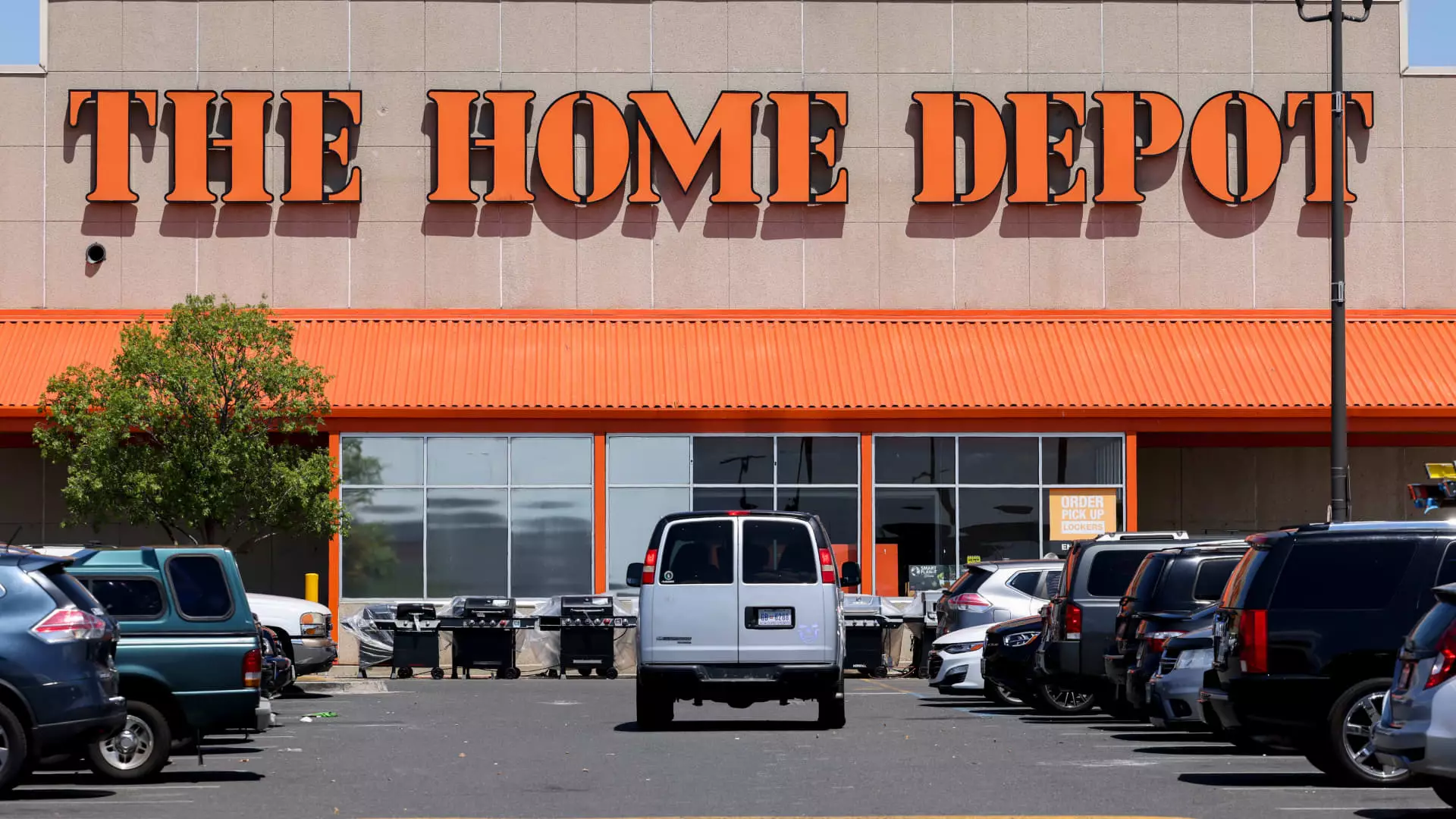Investors continuously grapple with the challenges posed by fluctuating interest rates and housing market dynamics. In recent developments, Home Depot has emerged as a focal point for investors looking to capitalize on these changes. While the stock has shown some resilience, it remains under the shadow of past highs, prompting an analysis of its potential trajectory as economic conditions evolve.
Recent Stock Performance Analysis
Home Depot’s stock has undergone a rollercoaster ride in the past year, illustrating the volatility inherent in retail stocks tied to housing markets. With an approximate year-to-date increase of 7%, the stock still lags behind the S&P 500’s performance, which has seen a growth of over 16%. The share prices peaked in March 2023 amid optimistic forecasts of impending Federal Reserve rate cuts but subsequently plummeted to around $325 per share in May—a clear indication of investor sentiment recalibrating in response to the evolving monetary policy landscape.
This fluctuation illustrates a broader theme of market speculation and reality; while prospective rate cuts were viewed favorably, the subsequent reassessment led to significant dips in Home Depot’s market value. Investor focus has shifted as corporate earnings shift, with Home Depot’s performance revealing stabilizing factors despite prior setbacks.
The climate surrounding interest rates and mortgage transactions is critical to Home Depot’s profitability. With the likelihood of Fed rate cuts becoming more tangible, many investors anticipate a resurgence in housing turnover—essentially, the lifeblood of home improvement retailers. Historical patterns indicate that when mortgage rates hover between 5% and 6.5%, housing turnover typically experiences a notable uptick. This recognition forms the crux of an investment strategy: acquiring shares in firms like Home Depot that are poised for growth as borrowing costs decrease.
Notably, the past few months have seen a decline in mortgage rates, with recent data showing a drop to 6.29%. While only a modest change, this decline has generated enough momentum to stimulate a 1.4% hike in total mortgage demand. These early signs of recovery suggest a potentially bright outlook for the future of housing-related retail as consumers are encouraged to engage in home purchasing and renovation activities.
A significant point worthy of discussion is the concept of tappable equity. According to CEO Ted Decker, the surge in home equity values—nearly $18 trillion since late 2019—means consumers have increasingly attainable financial resources. This represents a critical shift in how homeowners may leverage their homes for further investments, primarily through home equity lines of credit (HELOCs), currently valued around $11 trillion.
Understanding and capitalizing on this increased tappable equity could position Home Depot advantageously as homeowners look to remodel and improve their properties. While current sales figures indicate slight declines, the anticipation of a marked turnaround could signal a ripe investment opportunity.
Strategic Acquisitions and Professional Focus
A lesser-known but crucial differentiation in Home Depot’s strategy is its shift towards professional clientele. The acquisition of SRS Distribution, a professional building supply company, for over $18 billion is a significant move that broadens the company’s addressable market. Catering directly to professional customers rather than merely do-it-yourself consumers provides Home Depot a foothold in an area less susceptible to the whims of general consumer sentiment.
This pivot aligns with a broader trend of professional construction and renovation markets, potentially resulting in a higher likelihood of consistent orders and revenue growth compared to traditional retail segments. Therefore, incorporating this strategic focus plays an invaluable role in why investors see potential in Home Depot over its closest competitors.
Market Sentiment and Future Projections
Amidst developments in the housing market, questions surrounding consumer health and disposable income linger, primarily due to broader economic unpredictabilities. Concerns about consumer spending are ever-present. However, those actively engaging in housing investments tend to operate independently of these factors. As such, if mortgage rates normalize further, and housing turnover spikes, Home Depot stands positioned to benefit significantly.
Analysts suggest that significant market changes typically require time, and while Home Depot’s current sales data might reflect declines, the sector’s resilience suggests that a turnaround could be forthcoming, especially as mortgage rates potentially dip below 6%.
Given the outlined factors—mortgage trends, home equity dynamics, a strategic shift towards professional markets, and projected economic recoveries—investing in Home Depot appears to be a calculated risk for those willing to see the bigger picture. With a price target of $420 per share, optimism is rooted in expectations of growth as housing turnover strengthens further down the line. While market sentiment remains mixed, the underlying data indicates a positive outlook for Home Depot—emphasizing the importance of strategic investments in retail during times of economic flux.

